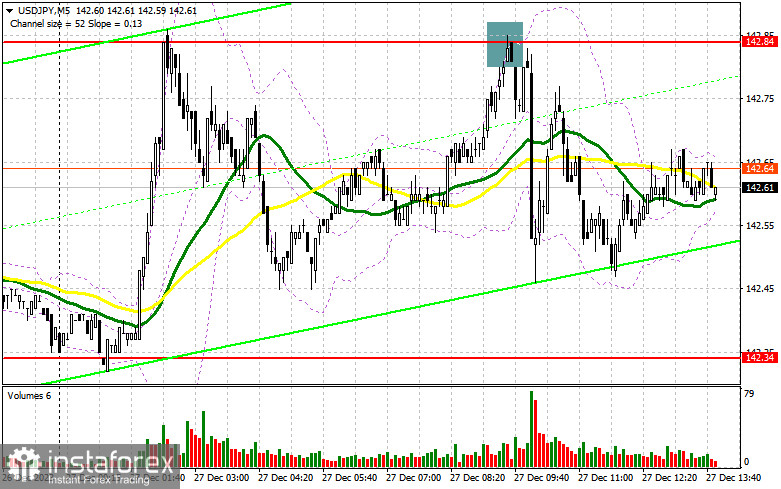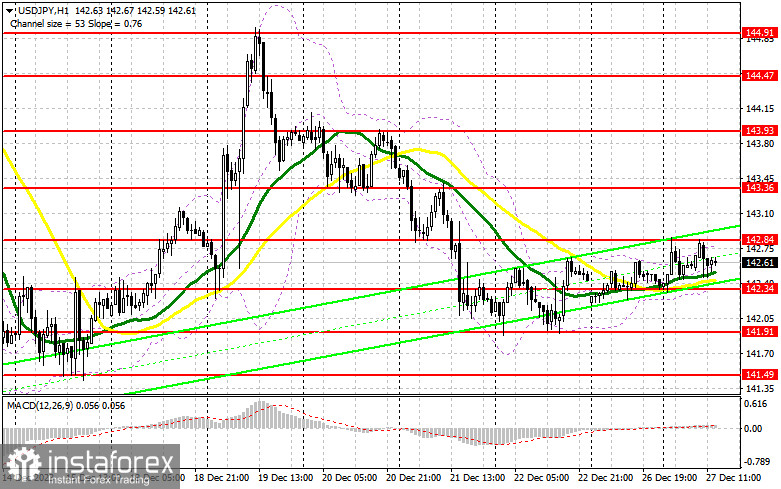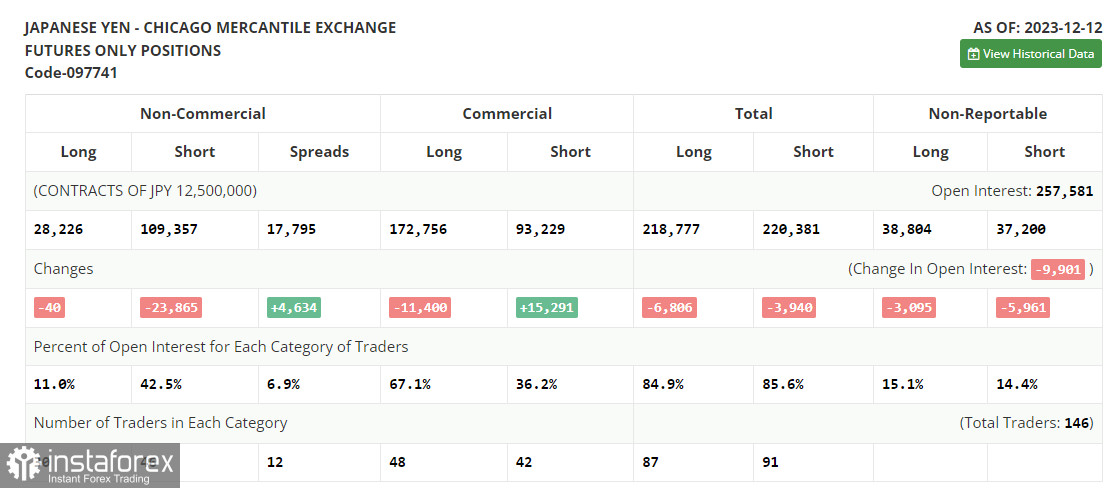In my morning forecast, I drew attention to the level of 142.84 and planned to base market entry decisions on it. Let's look at the 5-minute chart and analyze what happened there. The rise and the formation of a false breakout around 142.84 provided a good selling entry point, resulting in a decline of more than 30 points. The technical picture for the second half of the day remained unchanged.

To open long positions on USD/JPY, the following is required:
Ahead are data on the Federal Reserve Bank of Richmond's manufacturing index. Given that these figures are unlikely to interest traders seriously at the end of the year, I expect volatility to remain at the previous level. In the current conditions, and with the absence of significant U.S. statistics, it would be wise to wait for a decline and the formation of a false breakout around the nearest support level of 142.34. This is the optimal scenario for opening long positions during the American session. In this case, the buyers' target will be the resistance at 142.84, which has already been tested once today. Breaking and consolidating above this level may be relatively easy. A retest from top to bottom of this range will lead to another buying entry point, pushing USD/JPY upward towards 143.36. The ultimate target will be the area around 143.93, where I plan to make a profit. In the event of a pair's decline and the absence of buyer activity at 142.34, pressure on the pair will resume, leading to a new sell-off. In this case, I will attempt to enter the market around 141.91. However, only a false breakout will signal the opening of long positions. I plan to buy USD/JPY immediately on a rebound only from the monthly low of 141.49, aiming for a correction of 30-35 points within the day.
To open short positions on USD/JPY, the following is required:
Sellers performed well in the first half of the day. However, they must show strength around the 142.34 resistance to return to the downward trend. In case of another rise in the second half of the day, only the formation of a false breakout at 142.84, similar to what I discussed earlier, will confirm the presence of major players in the market and signal a sale capable of pushing USD/JPY down to 142.34. Breaking and retesting the bottom-up of this range will deal a more serious blow to buyer positions, leading to the removal of stop orders and opening the way to 141.91. The ultimate target will be the area around 141.49, where I plan to make a profit. In the scenario of USD/JPY rising and the absence of activity at 142.84 in the second half of the day, the upward correction in the pair will continue. In this case, postponing sales until testing the next resistance at 143.36 is best. If there is no downward movement, I will sell USD/JPY immediately on a rebound from 143.93, but only counting on a pair correction down by 30-35 points within the day.


Indicator signals:
Moving Averages
Trading occurs around the 30- and 50-day moving averages, indicating a sideways market character.
Note: The period and prices of moving averages considered by the author are on the H1 hourly chart and differ from the general definition of classical daily moving averages on the D1 daily chart.
Bollinger Bands
In case of a decline, the lower boundary of the indicator will act as support around 142.34.
Indicator Descriptions:
- Moving Average (an indicator that determines the current trend by smoothing volatility and noise). Period 50. Marked on the chart in yellow.
- Moving Average (an indicator that determines the current trend by smoothing volatility and noise). Period 30. Marked on the chart in green.
- MACD Indicator (Moving Average Convergence/Divergence — convergence/divergence of moving averages) Fast EMA period 12. Slow EMA period 26. SMA period 9.
- Bollinger Bands (Bollinger Bands). Period 20.
- Non-commercial traders - speculators, such as individual traders, hedge funds, and large institutions, use the futures market for speculative purposes and meet certain requirements.
- Long non-commercial positions represent the total long open position of non-commercial traders.
- Short non-commercial positions represent the total short open positions of non-commercial traders.
- The total non-commercial net position is the difference between non-commercial traders' short and long positions.





















